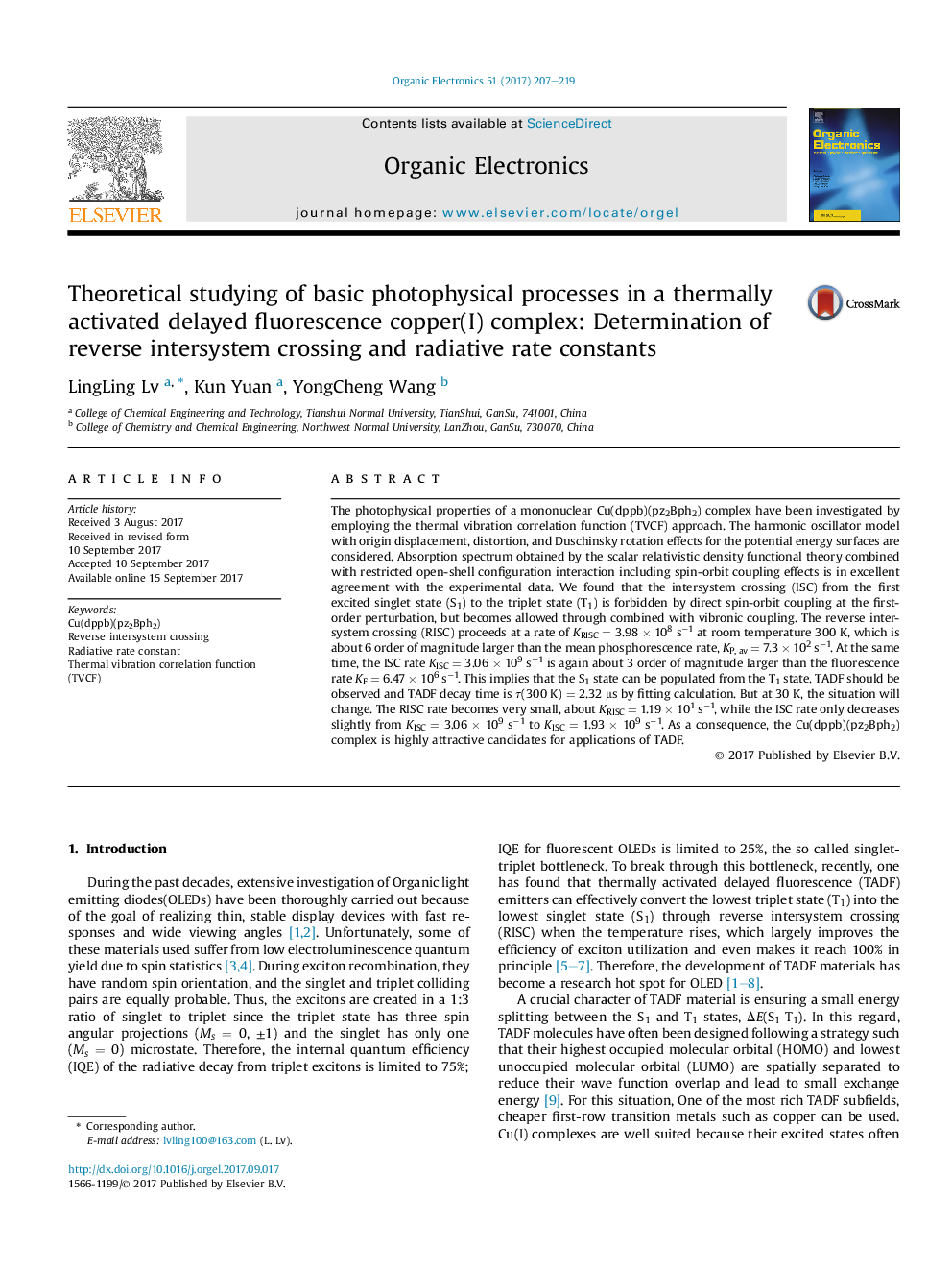| Article ID | Journal | Published Year | Pages | File Type |
|---|---|---|---|---|
| 5143823 | Organic Electronics | 2017 | 13 Pages |
Abstract
We found that the intersystem crossing (ISC) from the first excited singlet state (S1) to the triplet state (T1) is forbidden by direct spin-orbit coupling at the first-order perturbation, but becomes allowed through combined with vibronic coupling. The reverse intersystem crossing (RISC) proceeds at a rate of KRISC = 3.98 Ã 108 s-1 at room temperature 300 K, which is about 6 order of magnitude larger than the mean phosphorescence rate, KP, av = 7.3 Ã 102 s-1. At the same time, the ISC rate KISC = 3.06 Ã 109 s-1 is again about 3 order of magnitude larger than the fluorescence rate KF = 6.47 Ã 106 s-1. This implies that the S1 state can be populated from the T1 state, TADF should be observed and TADF decay time is Ï(300 K) = 2.32 μs by fitting calculation.152
Keywords
Related Topics
Physical Sciences and Engineering
Chemistry
Chemistry (General)
Authors
LingLing Lv, Kun Yuan, YongCheng Wang,
